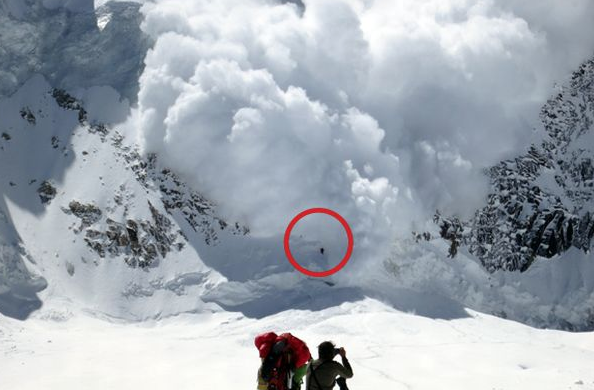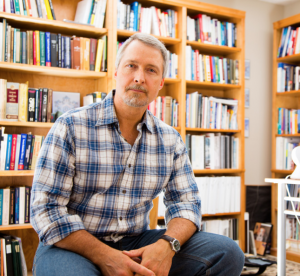
By Rob Shaul and Lindsay Mann
Background:
In an August article, we asked if there was a better way to teach the Heuristic Traps common in many avalanche accidents.
In September, we decided to reach out to the expert – Avalanche researcher Dr. Ian McCammon, who’s 2004 study, Heuristic Traps in Recreational Avalanche Accidents: Evidence and Implications is cited as the seminal paper on the subject.
Specifically, we asked Dr. McCammon why human factors are not a greater focus of avalanche education books and courses. Before our interview – we sent Dr. McCammon some of our thoughts and questions – which are reprinted below. Following is Part 1 of our Interview with him.
QUESTIONS SENT TO DR. MCCAMMON PRIOR TO OUR INTERVIEW
PART 1 OF THE INTERVIEW TRANSCRIPT

MTI: We’ve read through your studies.
McCammon: They’re pretty old, which isn’t that weird. How many fields of science do you have papers that were written 10-15 years old and people are still reading them. I think that’s a compliment, but also it’s a little bit sad that there’s not more research on this topic.
MTI: Do you have any insight as to why more people aren’t publishing papers on these topics?
McCammon: It’s a small field. Doing that kind of research doesn’t generally pay the bills, so its difficult fund that research so it has to be a labor of love.
MTI: Is that because its simpler and more quantifiable to take a look a numbers verse the human factor topics? It sure seems that your old papers had a pretty big impact.
McCammon: Certainly the easy fruit to reach for is the quantitative stuff. Human factors hasn’t always been an easy field to do research in. There certainly are plenty of researchers doing research in human factors and cognitive ergonomics, they’re just not very active in the avalanche field.
MTI: Do you agree that there is a disconnect between the human factor causes of avalanche accidents and the attention given to human factors in avalanche education?
McCammon: If you think human factors is a key factor in killing people in avalanche terrain or at least a factor in people making bad decisions in avalanche terrain then shouldn’t we be teaching more about it?
What’s interesting about the question, is if we back up a minute and ask, “Why do we think teaching about human factors will be effective?”
That’s actually an important question to ask.
We certainly know that teaching people about certain kinds of hazards is effective. But by and large teaching people about hazards, especially when they’re engaged in hedonic activities, and need to manage risk, there is a poor track record.
I wrote a paper titled, Sex, Drugs and the White Death, the premise of that is that if we could teach people about hazards in hedonic environments (engaged in pleasure seeking), sex education, drug education, if there were lessons to be learned from programs in these areas that we in the avalanche community should go out and learn as much as we could.
But the fact is, if you look at those programs and they’ve had millions of dollars put into them and a tremendous efforts, their educational impacts have been quite modest.
So really if we go back to the original question- what is the role of human factors in avalanche education?
Is giving people more information about human factors really going to make them safer?
MTI: It’s encouraging to see avalanche education have developed checklists. Can we incorporate human factors more into these checklists?
McCammon: One of the things I would like to see more of is research on the impact of checklists and the use of checklists in the backcountry. Not just if they work or not but what aspects of them are effective and what aspects of them are less effective.
There’s some evidence to suggest that there’s two potential downsides to checklists:
The first is that they tend to normalize accidents. It sets people’s expectations that accidents can be a more normal part of the experience and that’s a little disturbing.
The other one is automation bias- where people believe that if a checklist is in place that mitigates any given hazard.
It would be interesting to look at those research questions.
MTI: Could you expand on that first point.
McCammon: This comes out of a variety of research topics. One example is anti-drug education, so there were a variety of different tools that emerged from teaching these topics. The research that was done on students that were exposed to this began to see that students who were exposed to this tended to take more risk.
When they dove into it more they saw that the students exposed to these tools actually perceived accidents as a normal part of the activity. They saw negative outcomes as the more likely, as the more likely outcome.
This is happening to everyone so this should be part of my experience. That was a really counterintuitive part for the researchers.
MTI: There seems to be a dichotomy between avalanche education and ski movies, which are getting people excited for the season yet are showing people getting caught in avalanches. Do you think they need to work together more? What is the impact these ski movies have on people’s behavior?
McCammon: It’s something that has been out there for a long time. If you look at the impact these movies have on peoples’ behavior, its pretty powerful. By showing people getting caught in avalanche accidents it normalizes avalanche accidents as normal behavior. It backs up the point that if you’re not getting caught then you’re not taking appropriate risks.
The thing that we’re all battling in the human nature aspect. Compare the number of people who would see the Fast and the Furious, as opposed to the people who would go see a movie about safe driving. It just doesn’t have the same appear. There’s something about the risk and the challenge thats embedded in our DNA- that’s why we’ve survived as long as we have because we’re willing to take those challenges. Knowing that what people are doing is dangerous, that really validates their choice.
With that said the other half of that is that it is dangerous and they have to have the tools to go out and do good assessments and make good decisions. Those are a lot less sexy.
MTI: Do you have any thoughts on the effectiveness of debrief’s and any thoughts on that on the recreational side?
McCammon: The lack of debrief’s is an interesting question. If you think about the other aspects of our lives where we have near misses, its really not part of the culture do much in the way of debriefs. If you do too much of it people accuse you and say why don’t you just get on with things. It has its advantages and its downsides.
The thing that strikes me about the narratives – I’ve read a lot of accounts of avalanche accidents- not so much by the way of avalanche professions or avalanche investigators but if you look at what happens on social media and what happens in the old days, what was written in the newspaper. There were really three narratives that came out:
The first one is the ignorance. They just didn’t know any better- that’s why they were caught.
The second is that they were Reckless. They knew about the hazard and they were reckless, they were acting foolishly, they were egotistical, they were reckless. They had some fundamental flaw in their thinking or their personal attribute that caused them to take the risk and their paying the price for their foolishness.
The third one is interesting – I call it the “Hand of God” Narrative.
It’s here they were walking along minding their own business, doing everything right, and then suddenly out of the blue things went wrong.
That third narrative in general doesn’t hold up. That’s one that people often engage in when they’re telling their own narrative and they want to protect their own view of themselves as a good decision maker. Usually when you take a closer look at the circumstances you find out they ignored a whole variety of danger signs along the way but they were able to justify them. In the end when they were involved in an accident, it may have been a surprise to them, but when you look back at the accident you can say well if they were paying attention there shouldn’t have been an accident.
Those three narratives are really powerful: (1) ignorance, (2) recklessness and (3) hand of God. You find that in all the literature, not just avalanche accidents, but automobile accidents, aircraft accidents, mistakes made in tactical situations, mistakes made in the emergency room.
Those narrative are really ingrained culturally.
I can see how someone involved in an accident really doesn’t want to be judged on any of the three of these narratives. So people really don’t have much incentive to reflect when they know there is a cultural bias against them to do meaningful reflection relatively free of judgement.
What is the psychological terrain around shaming (accident shaming)? That would be a really fascinating research topic.
MTI: One of the narratives we hear in the military is that they’re very good a doing an honest debrief and case study. The mechanisms are in place but it all depends on the personalities on the business side. We haven’t been able to find an non-business or military culture that is really good about doing open honest debrief. Do you know of any culture that has open honest communication that we could apply to avalanche debriefs?
McCammon: Certainly in theory these things make sense that you’re good doing a good accident of an accident or a good decision. As you’re pointing out theres a lot of variability in the psychosocial content, the personalities involved and the agendas, and a whole bunch of other things.
The areas where I have seen the most effective debriefs from avalanche professionals in the helicopter guide community. I won’t say across the board, because I have some operations that do very little of it. Some of the operations I’ve seen, especially the bigger operations – they maintain a very effective culture for relatively judgment-free debriefs. It’s real work to maintain those cultures. It has to have buy in from the very top, the culture has to be in place and there has to be incentive for people to do it, and do it effectively. There’s a whole fabric that has to be there in order to make it effective, but when thats there it can be very effective. Again, that’s in a professional environment.
In a recreational environment we’re facing a different set of problems so those tools don’t necessarily translate.
Since we interviewed Dr. McCammon, the Denver Post reported on the concern’s about social media’s affect on avalanche safety voiced at the October International Snow Science Workshop in Breckenridge.
Here’s another piece on the subject, recently published in Adventure Journal.
Ian McCammon Interview, Part 2
STAY UPDATED
Sign-up for our BETA newsletter. Training tips, research updates, videos and articles - and we’ll never sell your info.
